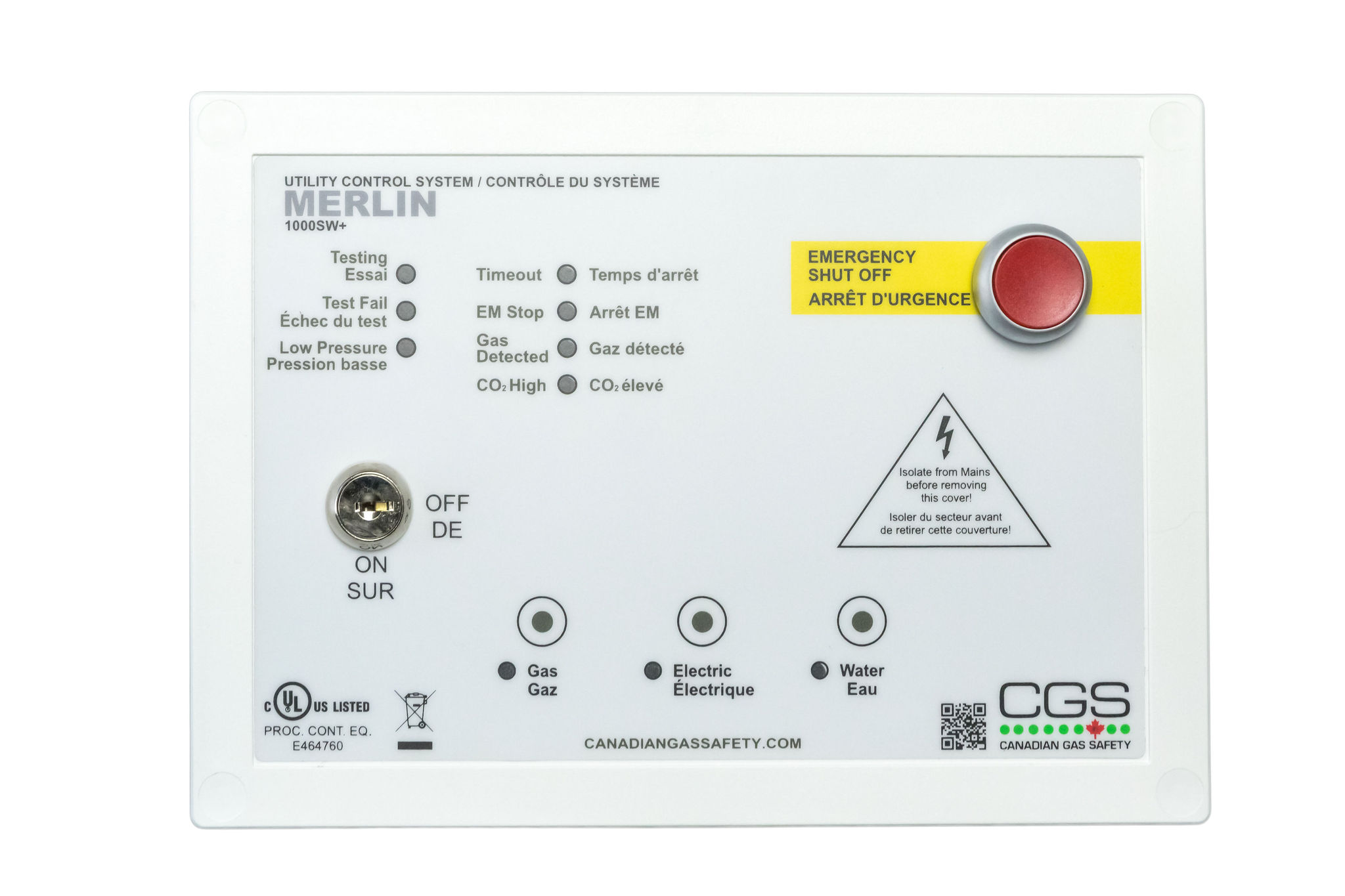When it comes to science classrooms and laboratories, a quick solution for control of utilities is arguably using a single ball isolation valve, as it complies with NFPA 54 5.12 “Shutoff valves shall be approved and shall be selected giving consideration to pressure drop, service involved, emergency use, and reliability of operation.” Though this is the bare minimum for code requirements, rarely will it be the best or safest option for the students, staff, and teachers in the classroom. In the unfortunate case where there is an emergency, a teacher must be able to quickly locate and shut the ball valve to stop gas from leaking. In the heat of the moment, this could be quite adverse.

Utility controls are essential for maintaining safety in school science laboratories. This one stop product combines many useful features into one central controller. With the ability to manage gas, electricity, and water, the panel can quickly and easily shut down all utilities with a single button. When the controller is paired with gas detectors and emergency panic buttons, seamless safety shut down is ensured.
A vital feature of these controls is the key authority control. This enables only authorized personnel, such as staff and teachers, to activate utilities like gas or water. By restricting access, it prevents unauthorized individuals, such as students, from turning on gas turrets in the classroom and causing potentially hazardous gas leaks. With an isolation valve, the only way to circumvent this issue would be to close the ball valve whenever not in use. In the situation that a leak occurs and is not detected by the end of the day by smell, a vast amount of gas could build up throughout the night and could lead to a potential disaster.
Another crucial feature of the utility controller in a science classroom is the integration of gas pressure proving technology. This technology tests the gas pipes to ensure there are no leaks or open turrets in the classroom. By conducting a 30-second gas pressure test, the pressure sensor ensures that the pressure remains the same in the pipes, in which the sensor relates to the voltage. In the case that the voltage drops, the panel will be alerted that there is a leak somewhere in the gas pipe or that a turret is open, as there is gas escaping in some manner along the pipe.
Gas pressure proving technology has the potential to avoid a large disaster from occurring. For instance, in September 2018, a gas explosion severely damaged École Polyvalente Mont-Bleu in Gatineau, Quebec. The explosion caused significant structural damage to the school, leading to its closure for an extended period while repairs were made. Upon discovering the potential hazard, school officials promptly evacuated students and staff to ensure their safety. Emergency responders, including the fire department and gas company technicians, arrived on the scene to assess and address the situation. The building was thoroughly inspected, and the source of the leak was identified and repaired. After confirming that the area was safe, students and staff were allowed to return to the school. Thankfully, the situation was minor, however, in the case something worse happened, pressure proving would have mitigated the entire problem.
A utility controller’s built-in time out feature enables an additional layer of security and safety of the classroom and its occupants. When the utility has been on for a couple of hours, the panel will shut the valve, ensuring that during out of hours, no gas, water, or electricity is running when not needed.
For a quick summary on the CGS Range of science laboratory utility controllers, please watch the below video.
Now where do code and regulation recommendations come in? How does Canadian Gas Safety meet these standards and exceed them?
By providing gas solenoid valves managed by a utility controller with pressure proving technologies, as well as emergency shut off buttons and/or gas detectors, Canadian Gas Safety ensures compliance with codes and excels. A few examples include:
Per IMC 2021 409.6 Shutoff valve for laboratories, “Where provided with two or more fuel gas outlets… each laboratory space in educational… occupancies shall be provided with a single dedicated shutoff valve through which all such gas outlets shall be supplied.”
Per NFPA 30 Flammable and Combustible Liquids Code, 2012 Edition 6.6.2, “(2) Process-monitoring equipment that would indicate a spill or leak could have occurred. (3) Provision of gas detectors to continuously monitor the area where facilities are unattended.”
Per NFPA 54 5.12 Shutoff Valves, “Shutoff valves shall be approved and shall be selected giving consideration to pressure drop, service involved, emergency use, and reliability of operation.”
Per NSTA Guidelines on Gas Shut-Off Valves. Emergency gas shut-off valves should be clearly labeled and activated by pushing a highly visible button. They should have a keyed reset mechanism to turn the gas supply back on after an emergency. This feature allows teachers to shut off the gas when not needed. Models with recessed red shut-off buttons help minimize accidental shutoffs. All emergency controls should be in locations easily accessible to teachers but out of students’ reach.
Per NSTA Guidelines for Middle and High Schools. In middle schools, if central gas is used, it should be located near the sinks at the room’s perimeter, with a button-activated emergency shut-off valve nearby. Emergency shut-off controls for electrical service and gas should be near the teacher’s station and not too accessible to students. In high schools, where gas is supplied by a central system, an emergency shut-off valve with a highly visible button is necessary. A central control valve should allow the teacher to turn off the gas when not in use. Emergency shut-off controls for electrical service and gas should be near the teacher’s station, close to the door, but not easily reachable by students.

